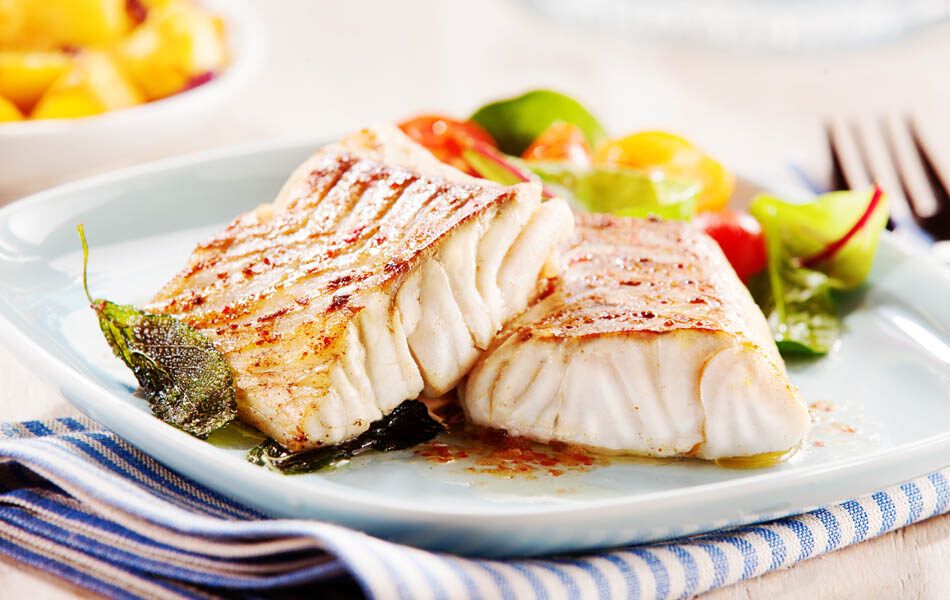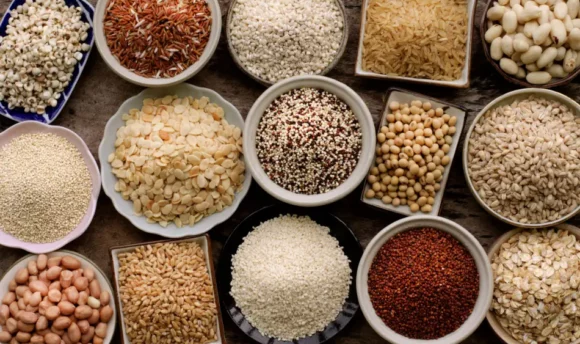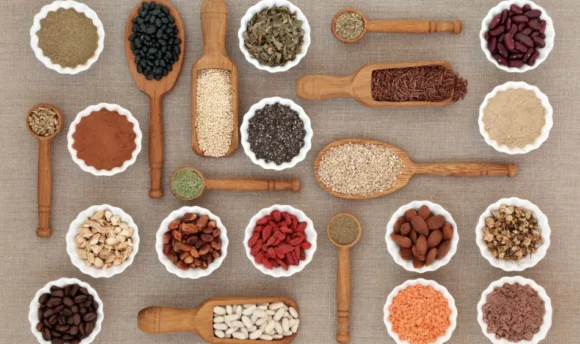Is Pollock Healthy? 7 Benefits and Nutrition Facts
Have you ever had Atlantic pollock? What about Alaskan pollock? Stick by as we explore the nutritional benefits of this popular seafood.

If you have been to the grocery store lately, you may have noticed something new in the fish aisle – pollock! Pollock is a fish that has become increasingly popular for its health benefits and low cost.
As more people are becoming conscious of their eating habits and looking for healthier options, many are turning to this delicious fish as an alternative to traditional cuts of beef or pork. But what makes pollock so healthy?
This article looks at what makes Atlantic and Alaskan pollock healthy and why you should make it your go-to protein choice from now on. Get ready to uncover why pollock might be the most nutritious and tastiest meal today.
What Is Pollock?
Pollock is a North Atlantic marine fish of the Gadidae family. There are two species of pollock: Pollachius pollachius, which is simply referred to as pollock, and Pollachius virens, which goes by saithe.
A third species exists, the walleye pollock or Alaskan pollock. But the Atlantic and European pollock and Alaskan pollock differ, as the Alaskan pollock belongs to a different genus.
Conversely, both species of pollock exist in freshwater and saltwater. Rich populations of pollock are found in the waters of North America, Ireland, and the UK.
On the other hand, saithe occupy the British Isles. There they go by multiple names such as coley, coalfish, Boston blue, European pollock, and silver bill.
What type of fish is pollock?
Both species of pollock, alongside the Alaskan pollock, are widely regarded as whitefish, making them similar to cod, whiting, and haddock.
Pollock has a light flavor compared to other fish and tends to take on the flavors, spices, or seasonings used in a recipe. Cooked pollock can be used in many dishes, such as fish tacos, fish sticks, chowder, salads, sandwiches, wraps, and pasta dishes.
Its firm texture lends itself well to various cooking styles, including frying, baking, or poaching. It is also the main ingredient in imitation crab meat.
Still, the Alaskan pollock found in the Western Bering Sea is not as popular as other species due to its poor sustainability in the market. This is because fishing and storing are difficult. Better still, stay away from pollock from the Western Bering Sea, as they are mostly over-processed products.
If you consider buying pollock, always ensure you buy from genuine Alaskan pollock producers – that way, you are guaranteed quality and no threat to the environment.
Is Pollock Healthy?
Yes, pollock is healthy. In fact, all whitefish are generally healthy to consume, as they contain a plethora of nutrients that aid growth and development up to the cellular level.
However, with seafood, in general, it is always wise to factor in the degree of toxins present. Mercury contamination is the most common toxin cited in seafood.
By good luck, all species of pollock contain small amounts of mercury, making them amongst the safest seafood to consume, along with salmon, lobster, crawfish, catfish, anchovies, and sardines.
Even so, the more pollock you eat in a substantially short period, the higher your chances of suffering from mercury contamination. According to the Environmental Defense Fund, the recommended pollock intake peaks at 4+ servings monthly. Although, this metric is taken in regard to not consuming any other contaminated fish.
7 Health Benefits of Pollock
Here are 7 interesting benefits based on the pollock fish nutrition facts.
#1 Supports weight management
If you want to lose weight, you need to pay attention to maintaining a calorie deficit. The more calories you rid your body of, the better you maintain weight.
Pollock is one food that does not contain a high amount of calories. As such, you can confidently fit it into your diet without worrying about exceeding your daily calorie intake.
Coupled with a proper exercise routine, you can easily manage your weight and achieve your dream physique.
#2 Offers antioxidants
One of its biggest health benefits is that it is a good source of antioxidants, which is great in reducing a variety of inflammation and pain. Additionally, it’s also good for inhibiting gastrointestinal, liver, skin, and eye diseases, improving exercise-induced fatigue and male fertility.
According to research, the nutrients obtained from eating pollock help reduce PMS cramps by encouraging the production of certain neurotransmitters. It also helps in calming down severe migraines.
#3 May prevent cancer
Pollock ranks as one of the best anti-cancer foods, as the nutrients inhibit the growth of cancer cells. It helps drastically reduce your risk of certain cancer types, and this is primarily because of the presence of selenium.
Likewise, it contains riboflavin, which helps maintain the lining of the digestive tract. This helps protect the immune system, as the digestive tract plays a key role in immune function since it helps with nutrient absorption.
#4 Reduces diabetes risk
Aside from its anti-inflammatory properties, pollock contains no trace of sugar, making it the perfect fit for those wishing to control their blood sugar levels. This, ultimately, means reducing the risk of diabetes.
Furthermore, with its low calorie content, you can stay off obesity, which is another leading cause of diabetes and cardiorespiratory health problems.
#5 May help treat anemia
Another important health benefit of pollock is that it is one of the best ways to combat anemia. It is high in iron, which can help increase red blood cell production and reduce anemia-related fatigue.
Eating pollock regularly as part of a healthy diet could effectively combat anemia symptoms and provide much-needed nourishment for people suffering from iron deficiency.
#6 Improves skin and hair health
DHA and EPA deficiency will result in negative skin health and skin conditions like psoriasis, eczema, and age spots. It also affects hair health, leading to hair thinning, falling hairs, and even dandruff.
Pollock helps boost collagen production, especially when paired with a regular Vitamin C intake. Collagen helps lock in moisture and results in skin that’s more elastic, reducing wrinkles and fine lines.
Furthermore, omega-3 promotes healthy scalp oils that strengthen your strands from root to tip, preventing breakage and shedding.
#7 Improves sight
Pollock also contains sizeable amounts of lutein and zeaxanthin, two carotenoid pigments that can filter harmful blue light from getting through to our eyes and help prevent age-related macular degeneration.
Additionally, its antioxidant properties help protect against free-radical damage, reducing age-related deterioration in vision.
Nutrition Facts of Pollock
Consuming pollock has become a staple for many people. Learning about pollock nutrition facts comes next.
Nutritional value per 100g
| Calories/Nutrients (per 100g) | Amount |
| Calories (kcal) | 56 |
| Net Carbs (g) | 0 |
| Fiber (g) | 0 |
| Sugar (g) | 0 |
| Fats (Total) | 0.41 |
| Protein (g) | 12.3 |
| Cholesterol (mg) | 46 |
Source: https://fdc.nal.usda.gov/fdc-app.html#/food-details/333476/nutrients
Low in calories and fats
This is perhaps the greatest upside to eating pollock. A 100g serving of delicious pollock contains only 56kcal and 0.41g of fat.
The majority of calories present in pollock come from its protein content. Likewise, it draws similarities to other whitefish as it contains low amounts of saturated fats. However, the preparation method can greatly affect this value.
For one, deep frying pollock will increase its saturated fat content, which can result in serious health challenges.
High in proteins
Eating pollock is an excellent way to increase lean protein consumption. 100g of Alaskan pollock contains 12.3g of protein, as well as essential amino acids.
Lean protein is great for weight loss since it fills without the added fat or calories, while amino acids provide the body with essential nutrients that can help build cells, tissues, and muscles and assist in metabolism.
Eating adequate amounts of lean protein and amino acids can help support healthier-looking hair, skin, and nails due to increased collagen production. Furthermore, amino acids help muscle tissue grow and even protect against cognitive decline by aiding in proper brain functioning.
Zero carbohydrates and sugars
Another interesting nutrition fact about pollock is that it contains zero carbs and sugars. This makes it the perfect addition to all low-carb or low-sugar diets.
Rich in vitamins and minerals
Pollock is one fish that contains many essential vitamins and minerals, including healthy amounts of phosphorus, selenium, potassium, and B vitamins.
Phosphorus helps with bone, teeth, DNA, and RNA formation, with the average daily intake for men and women being 1,596mg and 1,189mg, respectively. This mineral is particularly important for healthy fetal development. It also helps preserve hormonal, emotional, and neurological responses.
Potassium helps lower blood pressure, which, in turn, reduces the risk of stroke and other cardiovascular diseases, while selenium aids in proper thyroid and immune functioning.
Regarding B vitamins, they are essential in metabolism, improving brain health, boosting immune and nervous system function, and maintaining skin health.
According to research, vitamins B3 and B6 have positive results in Alzheimer’s treatment. Studies also reveal that vitamin B6 is particularly helpful in preventing and treating ADHD, as it plays a crucial role in the development of serotonin and norepinephrine.
Finally, coincidentally, the one mineral that you should place a watchful eye on is sodium. Pollock contains a hefty amount of sodium per 100g serving, which is a bad combination for those battling high blood pressure and hypertension.
The FDA advises not to recommend a daily intake of 2,300mg, stating that as much as 70% of sodium consumed comes from packaged foods. That is why you must avoid highly processed pollock.
Moderate in cholesterol
At 46mg per 100g serving, pollock ranks as one of the foods having a moderate cholesterol content. Eating foods that are high in cholesterol can have serious consequences for your body. High cholesterol can cause plaque and furring of the arteries, which narrows them, restricting blood flow.
This increases the risk of stroke or heart attack and puts immense strain on your cardiovascular system. Additionally, if you have familial hypercholesterolemia, a genetic disease caused by overproducing cholesterol, health complications may arise from eating too much of it.
Furthermore, cooking methods such as deep frying increase your overall cholesterol intake. That is why the best approach to preparing pollock is baking or grilling.
For these reasons, it is best to exercise caution when choosing what to eat and check for ingredients high in bad cholesterol, such as trans fats or saturated fats, so you do not risk your health.
Pollock vs. Salmon
Salmon is one of the most sought-after whitefish in the market. This is mostly because of its exquisite taste and valuable health benefits. As such, it is a great benchmark for comparing Alaskan pollock. So, let us take a look at the nutrition comparison between both fish.
| Pros | Cons | |
| Salmon | Contains essential omega-3 fatty acidsContains no carbohydrates and sugarsModerate calorie contentHigh in unsaturated fat contentGreat for weight lossRich in essential vitamins and minerals | High cholesterol contentPossesses toxin contaminantsHigh sodium content |
| Pollock | Contains essential omega-3 fatty acidsContains zero carbohydrates and sugarsLow calorie contentGreat for weight lossRich in essential vitamins and minerals | High cholesterol levelsLow fat contentPossesses toxin contaminantsHigh sodium content |
Healthy Pollock Recipe
While pollock might be a healthy option for many people, they most likely are not eating it as a standalone meal. There are many ways to enjoy pollock, but for health-conscious eaters, it’s important to have a wide range of healthy recipes at your disposal.
Here is a simple yet delicious Alaskan pollock recipe to try out: Alaska Pollock a la Plancha (4 servings).
Ingredients
- 1/2 tsp kosher salt
- 1 tsp black pepper, ground
- 1 cup pearl onions
- 1 cup fresh parsley leaves
- 1 tsp black pepper, ground
- 1 aluminum foil sheet (12″x12″)
- 2 lemons, halved along center
- 2 tbsp olive oil
- 3 sweet bell peppers, whole
- 4 tomatoes, vine-ripe
- 4 Alaska pollock, skinless fillets, 4oz per fish
- 8 slices whole wheat bread, toasted
Directions
- Start by preparing your Alaska pollock fish fillets with salt and pepper. Filleting fish is quite hard without the proper skills and tools, so getting one already prepared saves time, energy, and fish.
- Char your sweet bell peppers in the oven using a cast iron skillet. Remember, charring all sides of the pepper is important as it heightens the flavor. Once you have a nice char, cut your peppers into sizeable pieces.
- Quickly fry your onions and add your potatoes to one pot with cold water, bringing it up to a simmer. Allow your potatoes to simmer for about 2 minutes, strain, and reserve.
- Get your non-stick skillet hot, and then carefully place your seasoned Alaskan pollock fillets. The goal is to get a nice, even sear on both sides, so flip after 3 minutes. Once you have a nice sear, cook the fillet for an additional 1 minute and then reserve. Lightly cover it with the foil sheet to keep it warm.
- Add your potatoes, onions, tomatoes, peppers, and lemons to the skillet. Cook on low heat to brown the vegetables, and then add your pollock fish fillets.
- Plate your fillet, adding parsley, salt, and pepper to taste. Serve with toast.
You can access other food recipes by using the DoFasting app. DoFasting is an innovative intermittent fasting app designed to make your weight loss journey much easier.
The app comes with multiple features, one of which is its large catalog of healthy keto recipes. DoFasting has over 10,000+ health-based recipes, meaning you can enjoy your weight loss journey with amazing food.

- Useful progress tracker and calendar
- Calorie tracker to track daily caloric intake
- Over 5,000 nutritious recipes
FAQs
Pollock is healthy. However, due to its cholesterol, sodium, and toxin contaminants, it would be best to limit your serving size to avoid any health side effects.
Yes, pollock contains a high amount of omega-3 fatty acids.
No, pollock is not fattening as it contains zero carbs and fat and has a low calorie content.
A Word From a Nutritionist
From a nutritional standpoint, we have established what makes pollock healthy. Also, its exquisite taste is a great addition to many dishes, and it carries many great nutrients.
However, like with most other whitefish, its nutritional value can take a sudden turn depending on the preparation method. The biggest red flag with pollock is deep frying. This leads to an increase in saturated fat consumption.
If you eat fish, the safest method that produces excellent taste is to bake or grill. You also need to check in with your nutritionist, particularly for those with underlying health conditions, to make sure you can eat it.
Conclusion
Overall, it is fair to say that pollock is a delicious and pretty healthy fish. You can enjoy tasty fish sticks, tacos, and lots more. Its health benefits also contribute to its overall appeal.
Rich in protein and omega-3 fatty acids, it provides many nutrients your body needs to function properly. It is also low in mercury, making it a good choice for pregnant women or young children.
Plus, it is sustainable and relatively affordable. So next time you’re at the grocery store, be sure to pick up some pollock!

- Useful progress tracker and calendar
- Calorie tracker to track daily caloric intake
- Over 5,000 nutritious recipes

















































 Select your language:
Select your language: 








